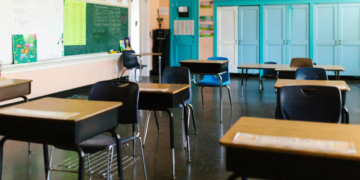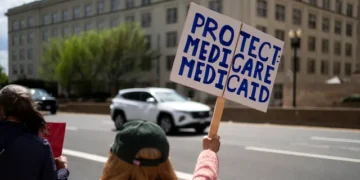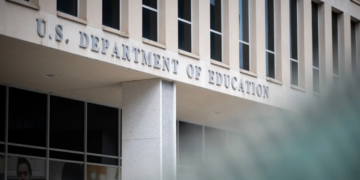Image Source: iStock/LumiNola
July 16, 2024 Story by: Editor
Suspensions in Omaha Public Schools (OPS) are projected to decrease for the 2023-24 school year, but Black students continue to face higher suspension rates compared to their peers, according to a new report.
On Monday, administrators presented this report to school board members, acknowledging that OPS has “work to do” to create more equitable school environments for all student subgroups. The report included historical trends and the latest data from the 2022-23 school year, along with preliminary projections for 2023-24.
“We are very aware that every table and every graph (in the report) narrows down to an individual child who has had a very difficult time in school,” said Amy Williams, executive director of student and community services for OPS. “This report certainly indicates that we have some work to do in our system.”
Comparing the 2022-23 school year to 2023-24, the district expects a 14.6 percent decrease in short-term out-of-school suspensions, dropping from 15,049 to 12,848, and an 11 percent decrease in long-term suspensions, from 392 to 348. A short-term suspension lasts up to five days, while a long-term suspension can extend up to 19 days.
Danielle Starkey, a multi-level system of support behavior supervisor for OPS, noted that the district has implemented various strategies over the past school year to reduce suspensions. These strategies include relearning expected behaviors, training building administrators in behavioral intervention planning, and forming a behavioral coaching and consulting team to assist buildings in responding to behaviors.
Middle school students have experienced higher rates of out-of-school suspensions over the past five years, with nearly 24 percent receiving a suspension in 2022-23, compared to 19 percent in 2018-19.
Overall, in-school suspensions are projected to increase by 5 percent from 2022-23 to 2023-24, rising from 9,774 to 10,261.
“This suggests that schools and programs were able to rely on options to keep students in school versus expelling them,” Starkey said.
The report indicates that during the 2022-23 school year, students of color were suspended at higher rates than their peers. While Black students make up about 24 percent of OPS students, they accounted for roughly 47 percent of suspensions. In comparison, white students make up 23 percent of the student population but accounted for only about 15 percent of suspensions. American Indian or Alaska Native students, as well as those of two or more races, were also disproportionately suspended.
OPS has faced criticism in the past for its disproportionate discipline rates. In 2015, a review by the Nebraska Department of Education found a high suspension rate for Black special education students and ordered the district to redirect $1.85 million in federal funds to staff training as a penalty for the disproportionate suspensions in 2011 and 2012.
Racial disparities in school discipline have been a persistent issue in the US. Statewide, 30 percent of out-of-school suspensions during the 2022-23 school year involved students of color, even though they only represented 6.5 percent of Nebraska’s total public school population, according to state data.
Other trends in the report show that students eligible for education benefits were nearly three times more likely to experience an out-of-school suspension compared to those who were not eligible. Special education students were about twice as likely to receive an out-of-school suspension or expulsion compared to non-special education students.
The primary reasons for out-of-school suspensions across all grades included serious fighting, reckless behavior, and insubordination, while in-school suspensions were mostly due to absenteeism, insubordination, and class disruptions.
About 1 percent of OPS students were expelled during the 2022-23 school year, mainly for assault with intent to injure or bringing a weapon to school, with the expulsion rate unchanged from 2018-19. Racial disparities in expulsions also persist in OPS, with 53 percent of expelled students being Black, compared to 9 percent who were white.
Williams stated that OPS administrators will continue to analyze discipline data from 2023-24 to identify more trends for different student subgroups.
“This report makes it clear that our school environment is not serving all of our students equitably,” Williams said. Source: Simba For Kids

















